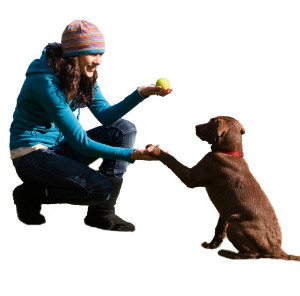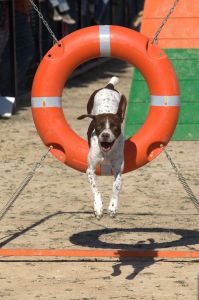 Training your dog can be one of the biggest challenges you will face as a dog owner. A well trained dog can be a wonderful companion. There are many different schools of thought on how to train your pet. They embrace a variety of philosophies and you need to decide what works best for you before you actually begin training. Since you should start the latter as soon as your dog arrives, you need to be making these decisions before then. In some ways, it is a bit like parenting. Will you or won’t you spank your child?
Training your dog can be one of the biggest challenges you will face as a dog owner. A well trained dog can be a wonderful companion. There are many different schools of thought on how to train your pet. They embrace a variety of philosophies and you need to decide what works best for you before you actually begin training. Since you should start the latter as soon as your dog arrives, you need to be making these decisions before then. In some ways, it is a bit like parenting. Will you or won’t you spank your child?
Positive training methods are newer and more popular with most training schools. They rely on rewarding positive behavior and using your dog’s natural desire to please you to teach him what pleases you. Negative training methods encompass the more traditional approaches to dog training. They include the use of choke collars, force, and other methods of punishment when your dog does the wrong thing. There are famous trainers that support each method.
One of the key issues with negative reinforcement is that many take it too far and it becomes abuse. There is never a need to physically injure your pet in order to make your point. Far too often punishment is given when you are angry and you inflict far more damage than you ever meant to. There are ways to use negative reinforcement that do not involve force at all. Your dog craves your attention and ignoring him when he is trying to get your attention is a definite negative in his books. It’s also an effective way to teach him not to jump on you, particularly if you reward him heavily and happily as soon as he sits quietly by your side.
Effective training is all about timing. You need your dog to associate the reward or punishment with the correct action. Poor timing on the owner’s part can cause a dog to develop a completely unrelated, and possibly worse, association. This is why punishment that is poorly timed can lead to a dog that develops anxiety or aggression issues. It also fails completely to teach your dog what you wanted him to learn.
Trainers focused on punishment often express the importance of being the dominant person in the pack. It is absolutely true that your dog must respect you as his leader. It is also true that there is absolutely no need to use force to get that respect in the vast majority of cases. Using force can backfire immensely. Some dogs will feel so threatened that they respond to force with aggression, exasperating the problem. Others simply shut down and cease working for anyone because the whole experience intimidates them so immensely.
Training can be an excellent way to bond with your pet. The relationship between a happy dog and his owner is a very special one. Keeping your training consistent and well-timed can make it happen faster and with far fewer issues along the way. Negative training does have a place in your methods and may on occasion be very effective when combined with positive training methods. There is no need for negative reinforcement to take the form of abuse, be it physical or mental. Your dog will be glad to work with you because he loves, there is no need for him to fear you.






I think you have some terminology wrong. Reinforcement always increases the likelihood of a behaviour occurring, while punishment always decreases the likelihood of a behaviour occurring. Negative reinforcement is taking away something bad which means the dog finds that good (e.g. if the dog was scared about being in the vet clinic, taking him out of the vet clinic would be reinforcing). Most of this post is about positive punishment, where you add something bad to the dog’s life (e.g. choke chains, yelling at the dog).
Comments are closed.